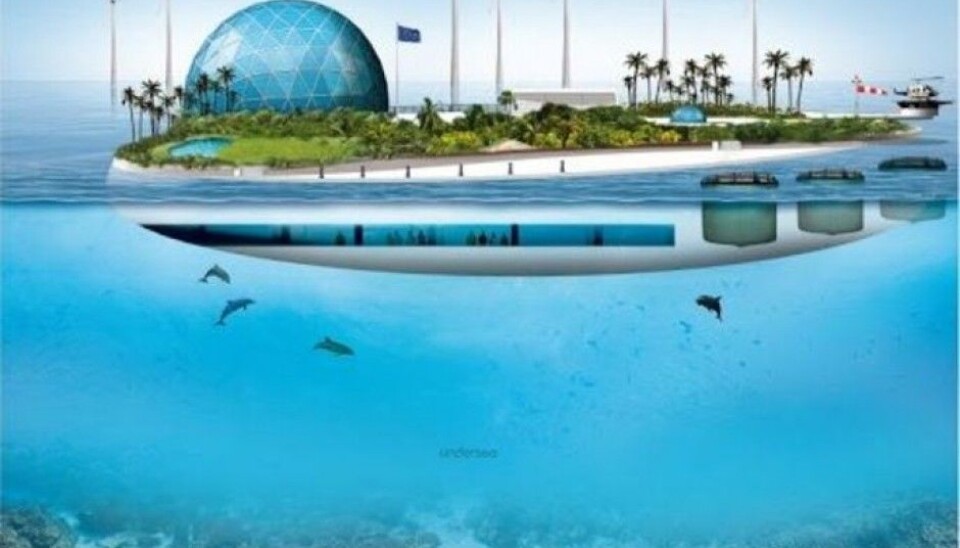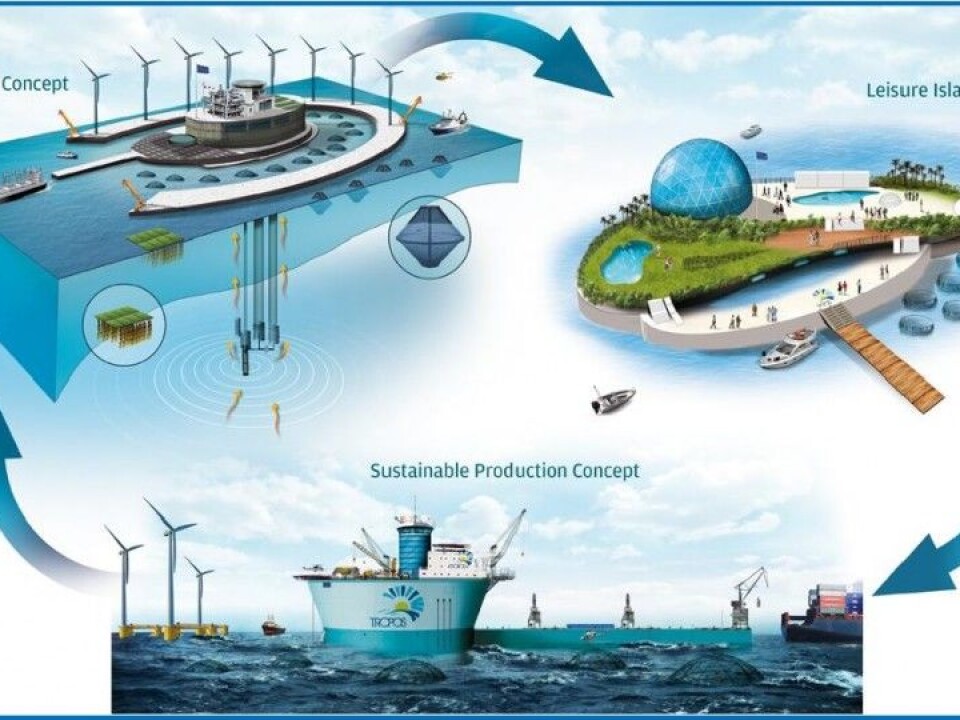An article from NIVA - Norwegian Institute for Water Research

The oceans of tomorrow have floating islands
Rapid growth of the world’s population, especially in coastal regions, adds pressure on resources and land already approaching their physical limits. Scientists are designing platforms to combine industry and harbour activity with renewable energy, aquaculture and leisure.
Denne artikkelen er over ti år gammel og kan inneholde utdatert informasjon.
The global population already exceeds 7 billion inhabitants, and more than half of them live within 200 km of the coast (generally concentrated in cities). It is estimated that at world level, the number of citizens living within coastal areas will double by 2025. The same observation is made in Europe: according to the EU Maritime Policy Green Paper, nearly half of the European population lives along or near the coasts, which reduces available lands in coastal regions.
To better allocate resources, shifting energy supply to renewable resources and finding new ways for food production and transportation, is necessary. The European Union, aware of this reality, in 2011 launched “The Ocean of Tomorrow” call for proposals.
Hereunder is the TROPOS-project, which gathers 20 partners from 9 countries; Spain, United Kingdom, Germany, Portugal, France, Denmark, Greece, Taiwan and Norway.
Sustainable development
Four geographical areas are chosen as case-sites for locating these floating islands. They are Crete, Canary Islands, Taiwan and Dogger Bank in the North Sea. The Norwegian institute for Water Research (NIVA) is involved in several of the projects’ work packages, and lead the study on socioeconomic impacts. In the first phase, a socioeconomic study is carried out for the Canary Islands – the so-called Leisure Island concept.

“The TROPOS-project has high added-value as it will generate economic, environmental and technical benefits,” says Wenting Chen, researcher at NIVA.
“The renewable resources at sea bring great opportunities for developing industries with environmental-friendly energy.”
The Canary Islands are a well-known destination for many Norwegian tourists. The Leisure Island concept will be used as a service-driven platform for nautical and tourist activities in order to solve the spatial problem in touristic regions, contributing to reduce the pressure on coastal areas as well as to create new business and offshore tourist attraction opportunities.
“Monetary value is just part of the value TROPOS platform generates,” Chen explains.
Besides the stimulus of capital investment TROPOS platform brings to the economy, the platform creates marine leisure opportunities and promotes sustainable tourism by using cleaner renewable energy, according to Chen.
“Non-market use value for marine recreational activities and renewable energy are large in our case. When these values are considered, Net present value for TROPOS Leisure Island becomes positive,” she says.
Multi-use
The platform design for the Canary Islands is for a ‘Leisure Island’. In other locations, the platform will be designed for renewable energy generation (wind turbines and solar panels) and aquaculture (farming of fish, crustaceans, molluscs and aquatic plants).
“We therefore asked respondents whether it would make any difference to their opinions if the Canary Island platform also included wind turbines and aquaculture,” Chen says.
Almost two-thirds of respondents (61 percent) said that they would be more likely to support a platform that included wind turbines, and only 23 percent saying that they would be less likely to support a platform that included wind turbines.
Hence, the platforms’ multi-use are important both for the development of the concept and for the society.
“A TROPOS-platform can represent a huge step towards sustainable tourism for the Canary Islands,” Chen concludes.
The project is now in its final phase, and the concluding reports are expected early in 2015.
------------
Read the Norwegian version of this article at forskning.no






























